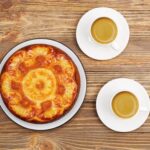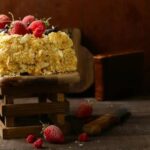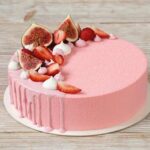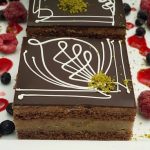Are you interested in learning how to practice cake decorating without a cake? Whether you’re a beginner looking to hone your skills or an experienced decorator wanting to try out new techniques, there are plenty of ways to perfect your craft without having to bake a cake every time.
In this article, we’ll explore the various tools and materials you’ll need to get started, as well as different icing and frosting techniques, step-by-step guides for practicing piping and patterning, creating 3D decorations, working with fondant and gum paste, experimenting with colors and textures, and troubleshooting common decorating challenges.
Learning how to practice cake decorating without a cake can be incredibly beneficial for several reasons. For one, it allows you to focus solely on perfecting your decorating skills without the added pressure of baking a cake from scratch.
Additionally, it gives you the opportunity to experiment with different techniques and materials without the fear of wasting ingredients or ruining a baked creation. With the right tools and materials at your disposal, you can practice and refine your skills anytime, anywhere.
In this article, we will guide you through the essential tools and materials needed to get started with practicing cake decorating without a cake.
We’ll also delve into different icing and frosting techniques, provide step-by-step instructions for mastering piping and patterning, offer tips for creating 3D decorations such as flowers and figures, explore advanced techniques using fondant and gum paste, share advice for experimenting with colors and textures, as well as troubleshoot common decorating challenges that may arise along the way.
Whether you’re a beginner or seasoned decorator, there’s always something new to learn when it comes to mastering the art of cake decorating.
Essential Tools and Materials
When it comes to practicing cake decorating without an actual cake, there are still some essential tools and materials that you will need to get started. While you may not be working with real cake at first, having the right equipment is crucial in honing your skills and techniques. Some of the essential tools include piping bags and tips, offset spatulas, food coloring, edible decorations, and a turntable for easy maneuvering.
One of the most important items you’ll need is a practice board or dummy cake. This can be made from Styrofoam or other similar materials, allowing you to practice your decorating techniques without using an actual cake. Additionally, having a good quality apron and kitchen towels are also important as things can get messy when practicing different icing and frosting techniques.
Another essential item for practicing cake decorating without a cake is a good quality stand mixer or hand mixer. These will come in handy when preparing various types of icing and frosting for your practice sessions. Investing in high-quality tools and materials may seem unnecessary when you’re just starting out, but they can make a huge difference in the outcome of your practice sessions.
| Essential Tools | Materials |
|---|---|
| Piping bags and tips | Food coloring |
| Offset spatulas | Edible decorations |
| Practice board or dummy cake | Stand mixer or hand mixer |
Understanding Different Icing and Frosting Techniques
When it comes to cake decorating, mastering different icing and frosting techniques is essential. But how can you practice these techniques without an actual cake? Thankfully, there are plenty of ways to hone your skills without the need for a cake. In fact, practicing on alternative surfaces can even offer some advantages, such as better control and the ability to experiment more freely.
One way to practice icing and frosting techniques without a cake is by using a styrofoam dummy cake. These faux cakes provide a stable surface for practicing piping, smoothing, and creating texture with various types of icing. Additionally, you can easily wipe off and reuse the dummy cake multiple times, allowing for plenty of repetition and refinement of your skills.
Another option for honing your icing and frosting techniques is by using parchment paper or wax paper. You can pipe designs, flowers, or borders directly onto the paper to perfect your hand movements and pressure control. The flat surface allows you to focus solely on the technique without worrying about the shape or structure of an actual cake.
Furthermore, practicing on a cake board or even a plate can be beneficial for understanding how different icings and frostings behave on various surfaces. This type of practice can give you insight into how temperature, texture, and application methods impact the final look of your decorations.
| Practice Surface | Advantages |
|---|---|
| Styrofoam Dummy Cake | Reusable surface for repetition and refinement |
| Parchment/Wax Paper | Flat surface for focusing solely on technique |
| Cake Board/Plate | Insight into how icings/frostings behave on various surfaces |
Step-by-Step Guide
When it comes to practicing cake decorating without a cake, one of the essential skills to master is piping and creating beautiful patterns with icing. This step-by-step guide will walk you through the process of practicing these techniques to improve your cake decorating abilities.
First, let’s start with the basic tools and materials you’ll need:
- Piping bags: These are essential for neatly dispensing icing onto your practice surface.
- Piping tips: Different tips create different shapes and patterns, so it’s important to have a variety on hand.
- Practice surface: You can use a cutting board, parchment paper, or even a silicone mat to practice your piping and patterning skills.
Now that you have your tools ready, it’s time to start practicing. Here’s a simple step-by-step guide on how to practice piping and patterning:
- Fill your piping bag with icing, ensuring that you have a secure grip on the top of the bag to prevent any leaks.
- Hold the piping bag at a 45-degree angle above your practice surface and apply gentle pressure to begin dispensing the icing.
- Practice creating different shapes and patterns such as dots, lines, swirls, and rosettes by applying varying amounts of pressure and adjusting the angle of the piping bag.
By following this step-by-step guide, you can hone your piping and patterning skills without needing an actual cake. This practice will help you become more confident in creating intricate designs when it comes time to decorate a real cake.
Creating 3D Decorations
Using Modeling Chocolate and Clay
One way to practice creating 3D decorations for cake decorating without using an actual cake is by using modeling chocolate or clay. These materials allow you to sculpt intricate designs and figures that can later be transferred onto a cake once you have mastered the technique.
Start by investing in a good quality modeling chocolate or clay and practice making simple shapes such as flowers, leaves, or even small figurines. Use your hands and basic sculpting tools to shape the material into the desired forms.
Making Edible Fondant Decorations
Another alternative for practicing 3D decorations without a cake is by working with fondant. Fondant can be easily molded into various shapes and designs, making it perfect for creating edible decorations. Roll out the fondant on a smooth surface and use cookie cutters or molds to create shapes like hearts, stars, or even animal figures. Additionally, you can use small sculpting tools to add details and textures to your fondant creations.
Exploring Wafer Paper Art
Wafer paper art is another fun way to practice 3D decorations without needing an actual cake. This thin, edible paper can be cut, shaped, and folded into beautiful designs such as realistic flowers, delicate butterflies, or intricate lace patterns. To start practicing with wafer paper art, invest in different colored wafer papers and begin experimenting with cutting and shaping techniques to create stunning 3D decorations.
By practicing these various methods of creating 3D decorations without having an actual cake at hand, you can hone your skills in cake decorating and become more confident in your abilities before working on a real cake.
Advanced Techniques
Cake decorating with fondant and gum paste can seem daunting, but with the right techniques and practice, it can open up a world of creative possibilities. Whether you’re looking to create realistic flowers or intricate figurines, mastering these advanced techniques will take your cake decorating skills to the next level. Here’s how to practice working with fondant and gum paste without needing an actual cake:
To get started with practicing fondant and gum paste decorations, you’ll need a few essential tools and materials:
– Rolling pin: A non-stick rolling pin is essential for rolling out fondant or gum paste to an even thickness.
– Fondant or gum paste: These can be purchased in pre-made colors or you can make your own from scratch using powdered sugar, gelatin, and water.
– Cutting tools: Sharp knives or pizza cutters are useful for cutting out shapes and designs from the fondant or gum paste.
– Molds and impression mats: These tools can help add texture and detail to your decorations.
– Edible coloring: Gel-based food coloring is best for tinting fondant or gum paste without altering the consistency.
Once you have gathered your materials, it’s time to start practicing different techniques:
1. Rolling and shaping: Practice rolling out fondant or gum paste to a consistent thickness, then experiment with shaping it into various forms such as petals for flowers or small figurines.
2. Texturing: Use molds and impression mats to add texture to your decorations, whether it’s mimicking the grain of wood on a figurine or adding veining details to flower petals.
3. Assembling: Work on assembling different components together to create 3D decorations, such as layering petals to form a realistic flower or attaching small parts together for figurines.
By consistently practicing these advanced techniques without needing an actual cake, you’ll build the confidence and skill necessary to create show-stopping cake decorations when the time comes. Don’t be discouraged if your first attempts aren’t perfect – like any skill, mastering fondant and gum paste work takes time and persistence. With enough practice, you’ll soon be creating professional-quality cake decorations that will wow friends and family alike.
Tips for Experimenting With Colors and Textures
When it comes to cake decorating, experimenting with colors and textures can take your creations to the next level. Whether you’re working on a traditional birthday cake or an elaborate wedding cake, understanding how to play with colors and textures can make a huge difference in the final result. But how can you practice experimenting with these elements without an actual cake? Here are some tips to help you get started.
Color Theory and Mixing
One of the key aspects of experimenting with colors in cake decorating is understanding color theory and mixing. For example, learning how to create different shades and hues by mixing primary colors can give you more options when it comes to decorating.
Practice mixing food coloring or icing gels on a palette or parchment paper to see how different combinations create new colors. This will also help you understand the intensity of each color and how they interact with one another.
Textured Techniques
Experimenting with textures in cake decorating can add depth and dimension to your designs. One way to practice this without a cake is by using a practice board or even just a smooth surface like a cutting board. Try different icing techniques such as stippling, stenciling, or even creating textured patterns with specific tools. By practicing on a flat surface, you can perfect your techniques before applying them to an actual cake.
Playing With Edible Decorations
Another way to experiment with colors and textures is by working with edible decorations such as sprinkles, edible glitter, or even chocolate shavings. Use these elements on a smaller scale such as cookies or cupcakes to see how they complement different icing colors and textures. This will allow you to see how various decorations interact with each other and give you ideas for incorporating them into your future cake designs.
By practicing these tips for experimenting with colors and textures without an actual cake, you’ll be better prepared when it comes time to decorate the real thing. Mastering these elements will not only enhance your skills but also give your cakes that extra wow factor that sets them apart from the rest.
Troubleshooting Common Decorating Challenges
When practicing cake decorating without a cake, it’s important to anticipate and troubleshoot common decorating challenges that may arise. This section will cover some of the typical issues you may encounter and provide tips for overcoming them.
One common challenge when practicing cake decorating without a cake is icing consistency. If your icing is too runny, it can be difficult to achieve clean lines and intricate designs.
On the other hand, if the icing is too stiff, it may be challenging to work with and could result in uneven or lumpy decorations. To address this challenge, it’s essential to learn how to properly adjust the consistency of your icing by adding small amounts of liquid or powdered sugar until you achieve the desired texture.
Another common issue is piping technique. When practicing piping and patterning without a cake, it can be tricky to maintain consistent pressure and control while creating decorative elements. To improve your piping skills, consider practicing on parchment paper or wax paper before transferring your designs onto a mock cake surface. This will allow you to perfect your technique and gain confidence before attempting to decorate an actual cake.
Finally, achieving smooth and flawless fondant or gum paste decorations can be challenging when practicing without a cake as these materials are sensitive to temperature and handling. To overcome this challenge, it’s important to work in a cool, dry environment and use cornstarch or powdered sugar for dusting surfaces to prevent sticking. Additionally, practicing proper rolling, cutting, and shaping techniques on a flat surface can help you master 3D decoration creation before applying them onto a real cake.
By understanding these common decorating challenges when practicing without a cake, you’ll be better prepared to tackle these issues when working with actual cakes in the future.
Conclusion
In conclusion, learning how to practice cake decorating without a cake can be an incredibly valuable skill for both novice and experienced bakers. By mastering the essential tools and materials, understanding different icing and frosting techniques, and practicing piping, patterning, and creating 3D decorations, you can build a solid foundation for your cake decorating skills.
As you continue to advance, working with fondant and gum paste, experimenting with colors and textures, and troubleshooting common decorating challenges will further enhance your abilities.
While it may seem unconventional to practice cake decorating without an actual cake, this method allows you to focus solely on honing your decorating techniques without the pressure of baking a perfect cake every time. By dedicating time to practice cake decorating without a cake, you can refine your skills and unleash your creativity in new ways.
Whether you’re aiming to become a professional baker or simply want to impress friends and family with beautifully decorated cakes, mastering these skills will undoubtedly set you apart.
So what’s next after mastering cake decorating without a cake? The possibilities are endless. You can take your skills to the next level by enrolling in advanced cake decorating courses or workshops, exploring new trends in the world of baking and pastry artistry, or even launching your own business offering custom cake decorations. With dedication and practice, there’s no limit to what you can achieve in the exciting world of cake decorating.
Frequently Asked Questions
How Can I Practice Cake Decorating Without Baking Cakes?
You can practice cake decorating without baking by using dummy cakes or foam cake dummies. These are artificial cakes that you can decorate repeatedly without having to bake new cakes each time.
What Can I Use to Practice Cake Decorating?
For practicing cake decorating, you can use materials like fondant, royal icing, gum paste, or buttercream to decorate the dummy cakes. These materials can be shaped, piped, and sculpted just like they would on real cakes.
How to Make a Dummy Cake for Practice?
To make a dummy cake for practice, start by shaping a foam block into the desired cake shape using a serrated knife. Cover the foam with plastic wrap and then with fondant or buttercream to create a smooth surface for decorating. This dummy cake can be used multiple times for practicing different techniques.

Welcome to my blog about home and family. This blog is a place where I will share my thoughts, ideas, and experiences related to these important topics. I am a stay-at-home mom with two young children. I hope you enjoy reading it! and may find some helpful tips and ideas that will make your home and family life even better!





